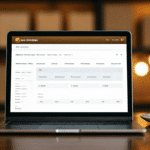How to Add a Scale to UPS WorldShip
UPS WorldShip is a powerful tool that can help streamline your shipping process. However, without a scale, you may find yourself manually entering weight information for each package, which can be time-consuming and prone to error. Adding a scale to your UPS WorldShip setup can help you save time, improve accuracy, and ultimately increase your bottom line. In this article, we'll walk you through the process of adding a scale to UPS WorldShip, from understanding the importance of a scale to troubleshooting common issues and integrating your scale with other shipping solutions.
Understanding the Importance of a Scale in UPS WorldShip
Before diving into the specifics of adding a scale to UPS WorldShip, it's essential to comprehend why a scale is crucial to the shipping process. Accurately measuring the weight of each package is vital for calculating shipping costs and ensuring compliance with weight requirements. According to the UPS Shipping Rates, incorrect weight declarations can lead to additional fees or delays.
Using a scale eliminates the need for manual estimates, reducing the risk of errors that can be both time-consuming and costly. A study by the PwC Transportation and Logistics division highlights that automated weighing systems can improve shipping accuracy by up to 30%, significantly impacting overall business efficiency.
Choosing the Right Scale for Your UPS WorldShip Needs
Weight Capacity and Accuracy
Not all scales are created equal. When selecting a scale for your UPS WorldShip setup, consider the weight capacity and accuracy. For businesses handling a high volume of packages or shipping heavy items, a scale with a higher weight capacity and precise measurements is essential. The Bureau of Labor Statistics recommends accuracy within 0.1 pounds for optimal shipping operations.
Compatibility and Connectivity
Ensure that the scale you choose is compatible with UPS WorldShip. Look for scales that offer USB or Bluetooth connectivity for seamless integration. Some scales come with dedicated software or APIs that facilitate direct communication with UPS WorldShip, streamlining the data entry process.
Installing and Configuring Your Scale for Use with UPS WorldShip
Connecting the Hardware
Once you've selected the appropriate scale, the next step is installation. Connect the scale to your computer using the provided USB or Bluetooth adapter. Refer to the manufacturer’s instructions for specific setup details to ensure proper connectivity.
Installing Drivers and Software
Install any necessary drivers or software that accompany the scale. This software often includes calibration tools and ensures that the scale communicates effectively with UPS WorldShip. According to UPS Support, following the manufacturer’s installation guide is critical for successful integration.
Configuring UPS WorldShip
Open UPS WorldShip and navigate to the configuration settings. Under the “Hardware” tab, select the connected scale and configure the settings to match your scale’s specifications. Test the setup by weighing a sample package to verify that the data is accurately reflected in UPS WorldShip.
Troubleshooting Common Issues
Connection Problems
If your scale isn't connecting properly, first ensure that all cables are securely attached and that the scale is powered on. Refer to the troubleshooting section in the scale’s manual or visit the UPS Help Center for additional support.
Calibration Errors
Calibration issues can lead to inaccurate weight readings. Regularly calibrate your scale according to the manufacturer’s guidelines. If persistent errors occur, it may indicate a hardware malfunction requiring professional servicing.
Software Compatibility
Ensure that both UPS WorldShip and the scale’s software are updated to the latest versions. Incompatibilities can arise from outdated software, leading to communication issues between the scale and UPS WorldShip.
Maximizing Efficiency with Your UPS WorldShip Scale
Automating Shipping Processes
Leverage the automation features within UPS WorldShip to streamline your shipping operations. Configure the software to automatically input weight data from the scale, reducing manual entry and minimizing errors. According to a report by Logistics Management, automation can decrease shipping processing time by up to 25%.
Batch Shipping and Label Printing
Utilize batch shipping capabilities to process multiple orders simultaneously. Pairing your scale with a label printer can further enhance efficiency by automating label creation based on weight data. This integration accelerates the fulfillment process and ensures consistency across shipments.
Integrating Your UPS WorldShip Scale with Other Shipping Solutions
UPS WorldShip can work in tandem with other shipping platforms like Amazon Fulfillment or Shopify. By integrating your scale with these platforms, you can centralize your shipping data, reducing the need for multiple data entries. Explore available plugins or APIs that facilitate seamless communication between UPS WorldShip and your preferred shipping solutions. According to Shopify, integrating shipping tools can enhance overall operational efficiency and provide a unified view of your shipping activities.
Cost Savings and Business Benefits
Reducing Shipping Costs
Accurate weight measurements ensure that you are billed correctly for shipping services, preventing overcharges and underpayments. By avoiding unnecessary fees, businesses can save significant amounts annually. A study by Forbes highlights that precise shipping data can reduce shipping costs by up to 15%.
Enhancing Customer Satisfaction
Delivering packages accurately and on time improves customer satisfaction and loyalty. UPS WorldShip’s integration with a reliable scale ensures that shipping information is precise, leading to fewer delays and enhanced trust from your customers.
Improving Inventory Management
With accurate weight tracking, businesses can better manage their inventory and shipping logistics. This data aids in forecasting shipping needs, optimizing packaging, and improving overall supply chain efficiency.
The Benefits of Using a Scale with UPS WorldShip for Small Business Owners
For small business owners, integrating a scale with UPS WorldShip offers significant advantages. It levels the playing field with larger competitors by automating crucial aspects of the shipping process, allowing small businesses to operate more efficiently and cost-effectively. According to the Small Business Administration, optimizing shipping operations can lead to a 20% increase in overall business productivity.
Additionally, accurate shipping calculations using a scale help small businesses provide transparent pricing to customers, fostering trust and encouraging repeat business. By minimizing shipping errors and delays, small businesses can maintain a positive reputation and build a loyal customer base.
Conclusion
Adding a scale to your UPS WorldShip setup is a strategic investment that can enhance accuracy, efficiency, and cost-effectiveness in your shipping operations. By selecting the right scale, ensuring proper installation and configuration, and leveraging UPS WorldShip’s advanced features, businesses can streamline their shipping processes and achieve significant operational benefits. Whether you're a small business owner or managing a large-scale shipping operation, integrating a scale with UPS WorldShip can lead to improved accuracy, reduced costs, and enhanced customer satisfaction.






















